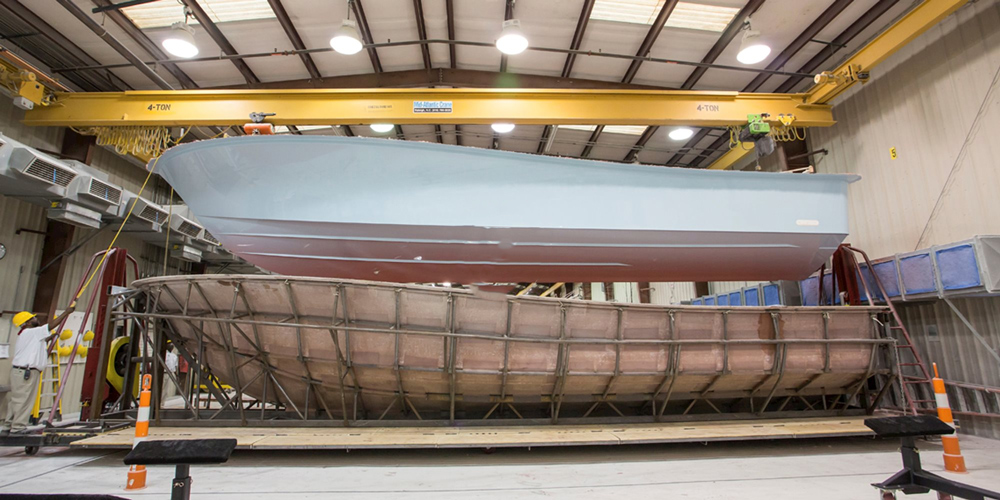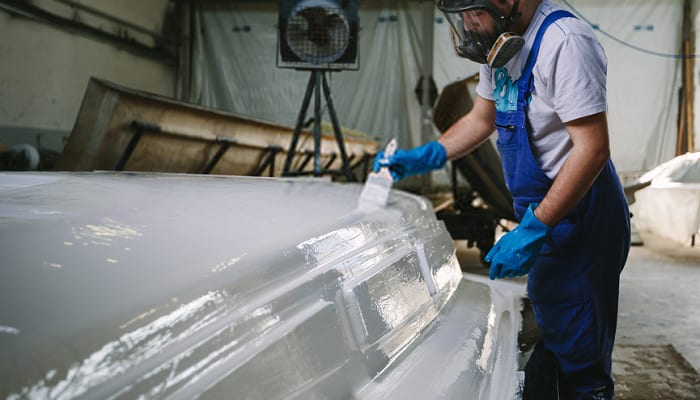
One of the significant advantages of fiberglass boats is that it can be repaired and restored with ease. You require just a few materials to repair a fiberglass boat as opposed to boats made of metal of wood that requires intricate and expensive work. Fiberglass boats look as good as new after you repair and restore it. Rather than looking like a separate patch, new layer of fiberglass merges with the body of the boat after it dries.
A tear at the bottom of a boat can ruin a well deserved afternoon on the water. It is therefore essential to inspect your boat on a regular basis and keep it in a good condition. You can strengthen or repair the tear or hole with the help of various products available in the market. You can soon be back on the water by following a simple repair process.
Materials required for fibreglass boat repair include bondo, fibreglass gel coating, fibreglass mat, sandpaper, supports and cleaning agents. You must have the required tools handy too including scraper, orbit sander, tape measure, scissors, cleaning supplies and coping saw or jig saw.
The steps you must follow while repairing the floor of your boat include –
Access to the floor – In order to comfortably reach the repair area on the floor of the boat, you must determine the access. It is of course, easier to repair the floor from the back of the boat. However, under certain circumstances, this may not be possible. To access the floor from inside, first clear the area and remove any equipment or storage before starting your work.
Ensure smooth edge – Edge of the fibreglass must be smooth rather than ragged. In order to get a smooth edge that is easier to repair, it is recommended to cut the damaged area unless the floor is structural.
Clean the surface – To ensure effective fibreglass epoxy adherence, it is important to keep the surface clean and free of any impurities. Clean with care as most marine impurities may not be clearly visible. Do not use cleaning agents that contain bleaching properties as it may react with the fibreglass epoxy. After cleaning, dry the site before starting work.
Keep supports ready – If the surface of repair is curved, it is essential cutting support shapes from plywood, tacking them together and keeping them handy.
Backing layer application – Around the damaged area, make the fiberglass rough using a steel brush, to ensure that the epoxy attaches with ease. Leave an overlap of at least three inches over the section that is damaged and cut a fiberglass sheet.
Cover curved space with bondo – If the repair area is curved, cover it with bondo matching the shape of the curve after forming a foam shape. Sand the bondo in thin layers before laying the fiberglass sheet over it and applying epoxy to the desired shape. Place layers of fiberglass over the cured shape and sand the new surface.
Close the exposed side – After fixing the backing support, it is now time to cut fiberglass with a three inches overlap and place it on the facing side of the damaged area.
Do not forget to sand the repaired area – The most important aspect of fiberglass boat repair is sanding. You can use a 400 grit paper and sand until you obtain a smooth surface. Sand till the surface develops a small amount of traction and matches the existing floor.
If you are a novice and lack experience, you can try repairing your fiberglass boat with the help of a repair kit. Purchase only the best quality kit and follow instructions. Repair kits require you to tape a Plexiglas or Formica piece to the inner surface of the boat to cover the hole. With this piece as the backing, you must then mix all the materials you find in the kit.
Repair kits for fiberglass boats usually contain a hardening agent along with a type of resin. Until the damaged spot is in level with the hull of the boat, you must fill in and then use a sandpaper to smooth the area to obtain a smooth and glossy finish.


